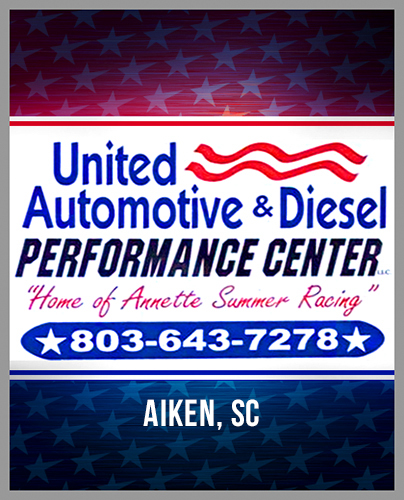PROJECT WHITE WAGON, PT. 3 – PREPARING FOR THE FOUR LINK
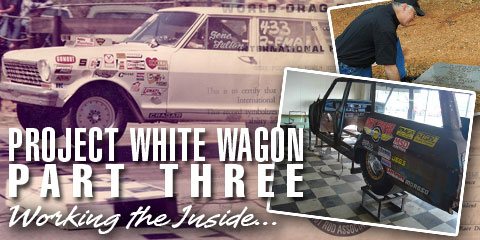 The more the Project White Wagon becomes a topic of conversation the more skeletons fall out of the closet. It appears to us that there was a lot more tothis lady than met the eye.
The more the Project White Wagon becomes a topic of conversation the more skeletons fall out of the closet. It appears to us that there was a lot more tothis lady than met the eye.
There are rumors the car pushed the rule book’s gray areas to the limits, including speculation the car had the front and rear axles moved forward like an FX car, a claim that Fulton chuckles over.
The car was so versatile that when it needed to bulk up, it could pack on the pounds and when it needed to slim down, it could do so with ease. During the course of a season, the original White Wagon could span from 2,800 pounds with a 262-inch small block to as robust as 3,900 to run in the G/Modified Production classification.
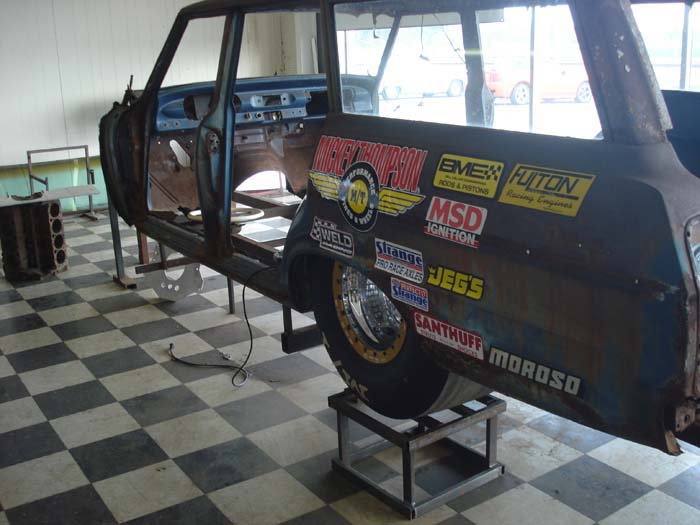
The more the Project White Wagon becomes a topic of conversation the more skeletons fall out of the closet. It appears to us that there was a lot more to
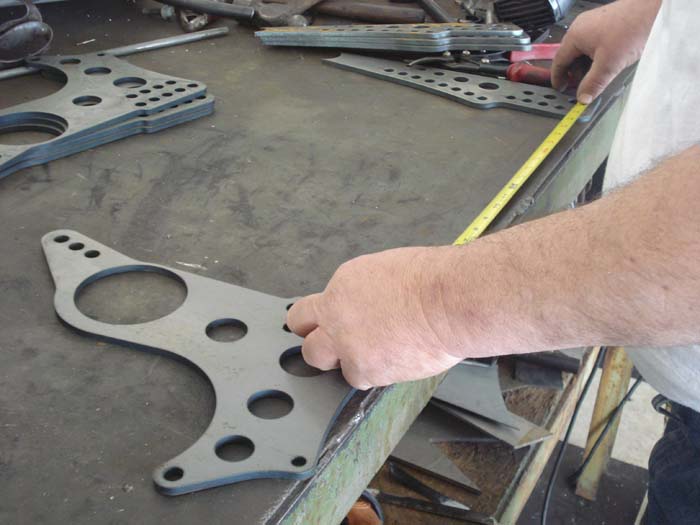
The chassis location bracket is important because, according to the NHRA and IHRA rulebook, you can only go as low as the rim of the car. That’s why the four-link, bolt holes and locations are where they are, so that the geometry and physics work right on the car. If the bracket is in an incorrect location, you’ll never achieve the proper geometry of your rear suspension.
this lady than met the eye.
There are rumors the car pushed the rule book’s gray areas to the limits, including speculation the car had the front and rear axles moved forward like an FX car, a claim that Fulton chuckles over.
The car was so versatile that when it needed to bulk up, it could pack on the pounds and when it needed to slim down, it could do so with ease. During the course of a season, the original White Wagon could span from 2,800 pounds with a 262-inch small block to as robust as 3,900 to run in the G/Modified Production classification.
And while there might have seemed no rhyme or reason to his actions, Fulton knew exactly what he was doing.
“Back in those days you went where the advantage was,” Fulton said. “You’d change classes like you’d change underwear. Sometimes lesser horsepower and heavy weight was the best, and vice versa. Sometimes we’d bomb the record one weekend and needed a better cushion the next. Wherever we moved to, we did so with the intentions of winning.”
For the White Wagon of today, we’re firmly entrenched in the plan to run SS/E Modified, and in this installment we’re going to focus on preparing the chassis to run this classification. The car as we mentioned earlier in the series will have a Quarter-max Race Cars nine-inch fabricated housing incorporated into a four-link suspension.
The four-link suspension and rear end on the new car is worlds apart from its predecessor. The rear-suspension was homemade in conjunction with a Dana housing.
“It was a stock frame,” recalled Fulton. “I did a little thing to modify the front end to make it function better. It did have four-link stuff in it. My original four-link in it was actually four third links of a Ford tractor and it worked just as well as the four-links today. It got outstanding traction.”
The difference between now and then is night and day with the track prep. Our concern is now more about handling the torque of the launch than scraping for every ounce of traction.
We’re taking a pass on the tractor four-link and the Dana, in favor of a Quarter-max fabricated, 9-inch Ford housing made of 4130 for increased strength and weight saving. We are installing the 45-inch (304104-2) version and according to Quarter-max the bulkheads are laser cut from a single piece and formed on a CNC break. The face plate is laser cut from ¼" thick 4130 drilled on a CNC mill to provide accurate hole locations.
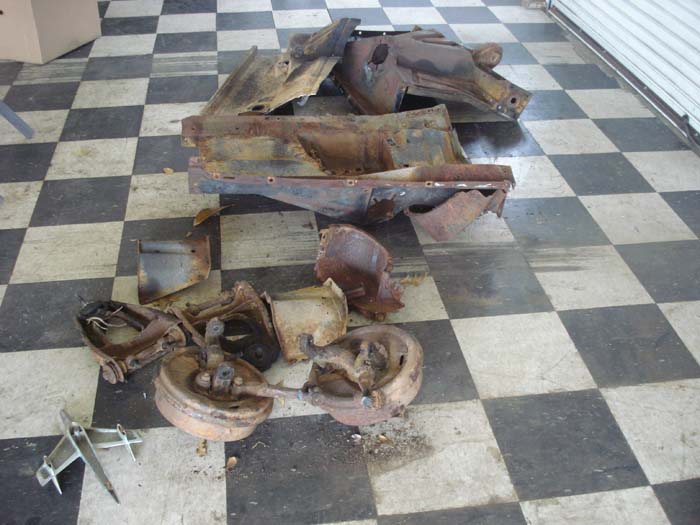
While this housing isn’t the same version used on the Elite-sponsored Pro Stocker Rickie Jones drives, this unit has a measure of Pro Stock technology incorporated into the construction. And for us, the combination of strength to absorb the torque from a 10,000 rpm launch and lightweight stature is invaluable to this project.
When you get an old, junkyard car like we have there is more to preparing this car that just throwing the rear end in there, laying down a few welds and moving on to the next part of the project.
Because this car was a basket case, it spent many years in a junkyard absorbing the humidity and cultivating the finest rust South Carolina could conjure, and this car will be a class legal Super Stocker, you have to study closely the NHRA rulebook to see what you can keep and what can be discarded.
Before Tom and the team at TL Race Cars began installing the rear end, he went through the shell of the wagon with his two trusty tools, a reciprocating saw and an air chisel, taking out the unnecessary stock items and carefully removing those required for re-installation later in the project.
The key is to clear the car of the items unnecessary at this point in the project to make accurate measurements painless.
“What most people don’t realize is that on most American made cars the engines are offset to the passenger side,” added Lukans, who has earned a comfortable living building back-half cars for the last two decades. “Since we have to use a stock tunnel for this stock floor pan, the driveshaft, rear end and yoke all have to be in line. A better alignment provides a better running car.”
With the car centered on the jig, the tubular frame rails will measure 22-inches from inside to inside. The NHRA rulebook mandates the stock frame rails must be retained, and we will, just incorporated within the confines of a tube chassis.
Because this [and other] particular American made cars are offset from the engine to the rear end from the center by ¾”, we must account for that in our rear end mounting.
Our measurements show a center dimension of 10 ¼”, so that we know the centerline for the motor to transmission driveshaft is offset 3/4 of an inch. If it was on center it would be eleven inches.
a d v e r t i s e m e n t
Click to visit our sponsor's website

By using this method of calculation, we are insuring our Quarter-max 4130 Ford 9-inch housing and driveshaft lines up accurately with the front of the Winberg crankshaft in our little 292-incher.
So why did we select a four-link for this car as opposed to a ladder bar combination?
The ability to adjust the suspension from track to track is the main reason. The time the class is run is also critical. We’ve watched countless number of times when at 7 AM or 10 PM, when the NHRA runs the sportsman cars, many of the competitors struggling to grip a track that has marginal traction.
The four-link chassis configuration began working its way into Super Stock on a large scale during the 1980s. Now the combination is the norm.
There are some ladder bar cars out there and some run really quick, as quick as seven seconds, but the easier choice for the day-to-day operation is the four-link.
“It’s always good to have a quality shop like Quartermax to assist you if questions do arise,” said Lukans, pointing out the average do-it-yourself mechanic can install a four-link. “But, if you get to the point you need some help, they are only a call away. You can tell how reliable their assistance is by the care they put into shipping your product.
“I’ve dealt with companies who just throw your stuff in a box and get it out of there, just for the sake of scratching one more thing off of their list of things to do. When the four-link accessories came in for the Project White Wagon, it was packaged efficiently and effectively, so that when you get the parts, you can open the box and it’s ready to go and in good condition. That comes from the fact that even though Rick Jones is a big time Pro Stock chassis builder now, he remembers what it was like building cars in his garage at night, after work.”
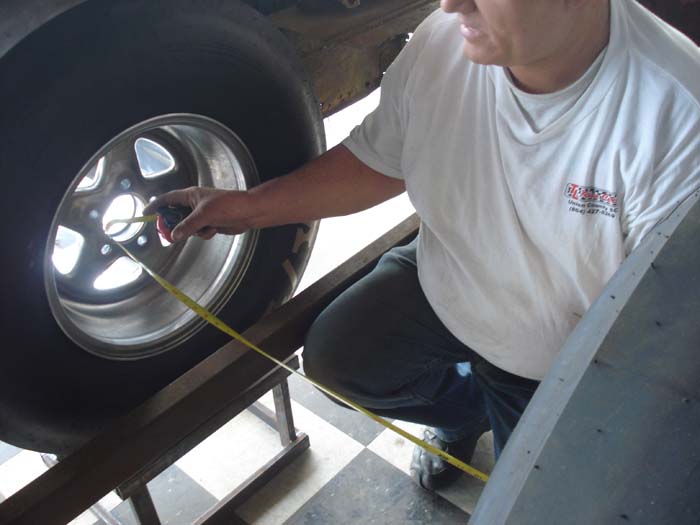

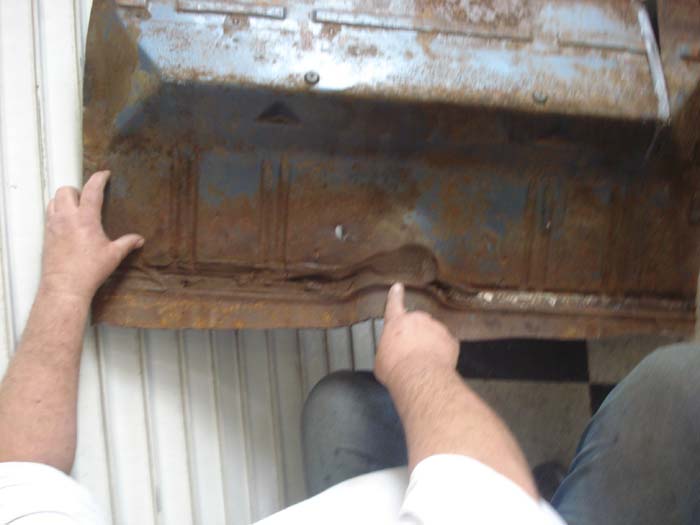
The rear-floor section is hard to come by, so that’s why we salvaged this section.
Many of the restoration companies have parts that will work in conjunction with the original pieces from 1964. This particular item, we have no other choice but to make it work.
This part has to fit in with the frame rail and provide us with the height we need for the back rail. The geometry of the four-link will fit in with this section.
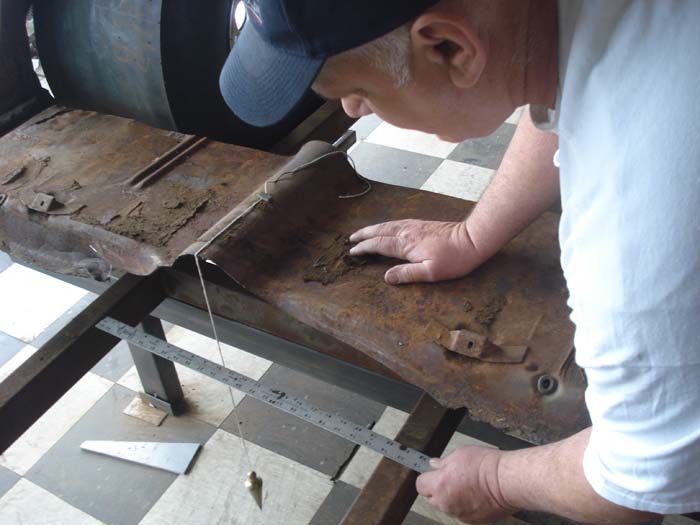
The back rail has to butt up against the stock tub because according to the NHRA rules, they want this to be intact and not cut out like you would see in the average bracket car.


a d v e r t i s e m e n t
Click to visit our sponsor's website
PART 4, ESTABLISHING THE GAME PLAN FOR THE ENGINE
PAST INSTALLMENTS
* Part 1, Outlining The Project
* Part 2, Getting The Car on The Jig

PROJECT WHITE WAGON SUPPORTERS
TL Race Cars (864) 427-5269
Fluid Power Specialties (864) 599-1118
Minton's Wrecker Service (864) 474-2581
Fulton Competition
PART SUPPLIERS
A.E.D. Motorsports Products (tubing)
Applied Racing Technologies (A.R.T)
Aeromotive Inc. (fuel system)
Autometer Guages (tech, engine gauges)
Bill Miller Engineering (rods, pistons)
Browell Bellhousings (bellhousing)
CFE Heads (cylinder heads, intake)
CFM Composites (seats)
Carson's Nut-Bolt and Tool
Comp Cams (camshaft)
Dart Engineering (Engine Block)
Flatout Gaskets (engine gaskets)
Hedman Headers (headers)
I.R.C. (wheelie bar wheels, bracketry)
Jegs Mail Order (misc.)
J&W Nova Parts (body panels and body sheetmetal)
Liberty's Transmissions (Transmission, Gears)
Matco Tools - (tools, tool box)
Mickey Thompson Tires & Wheels (front tires, slicks)
Moroso Performance (valve covers)
QA-1 (Rod Ends)
Quartermax Racing & Chassis Components (suspension, chassis components, axles)
Ram Clutches
Santhuff Shocks (front, rear shocks)
Simpson Safety - (Helmet, Firesuit)
Strange Engineering (Axles, Rearend companents)
Weld Racing (front, rear wheels)
Winberg Crankshafts (crankshaft)


























